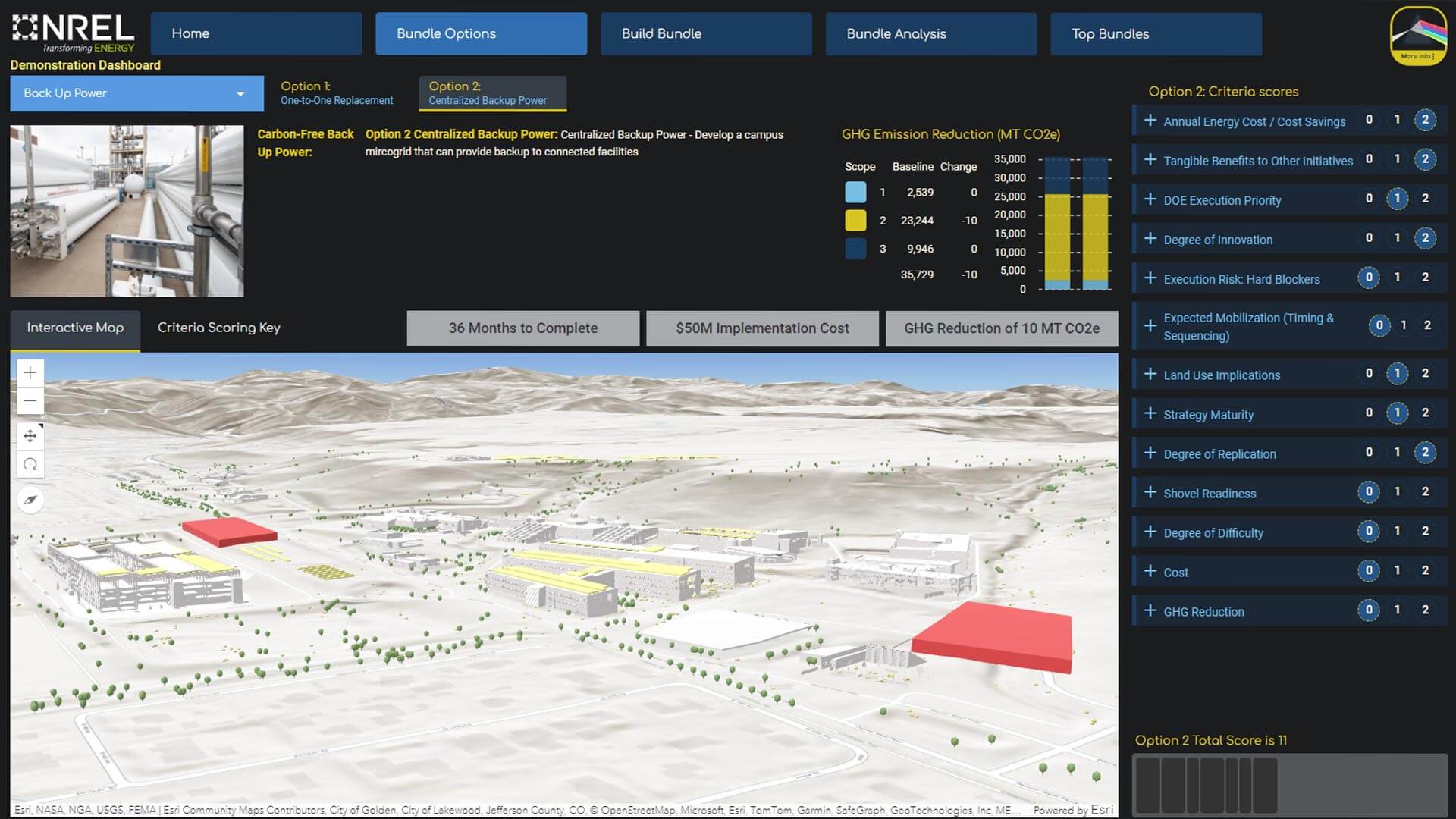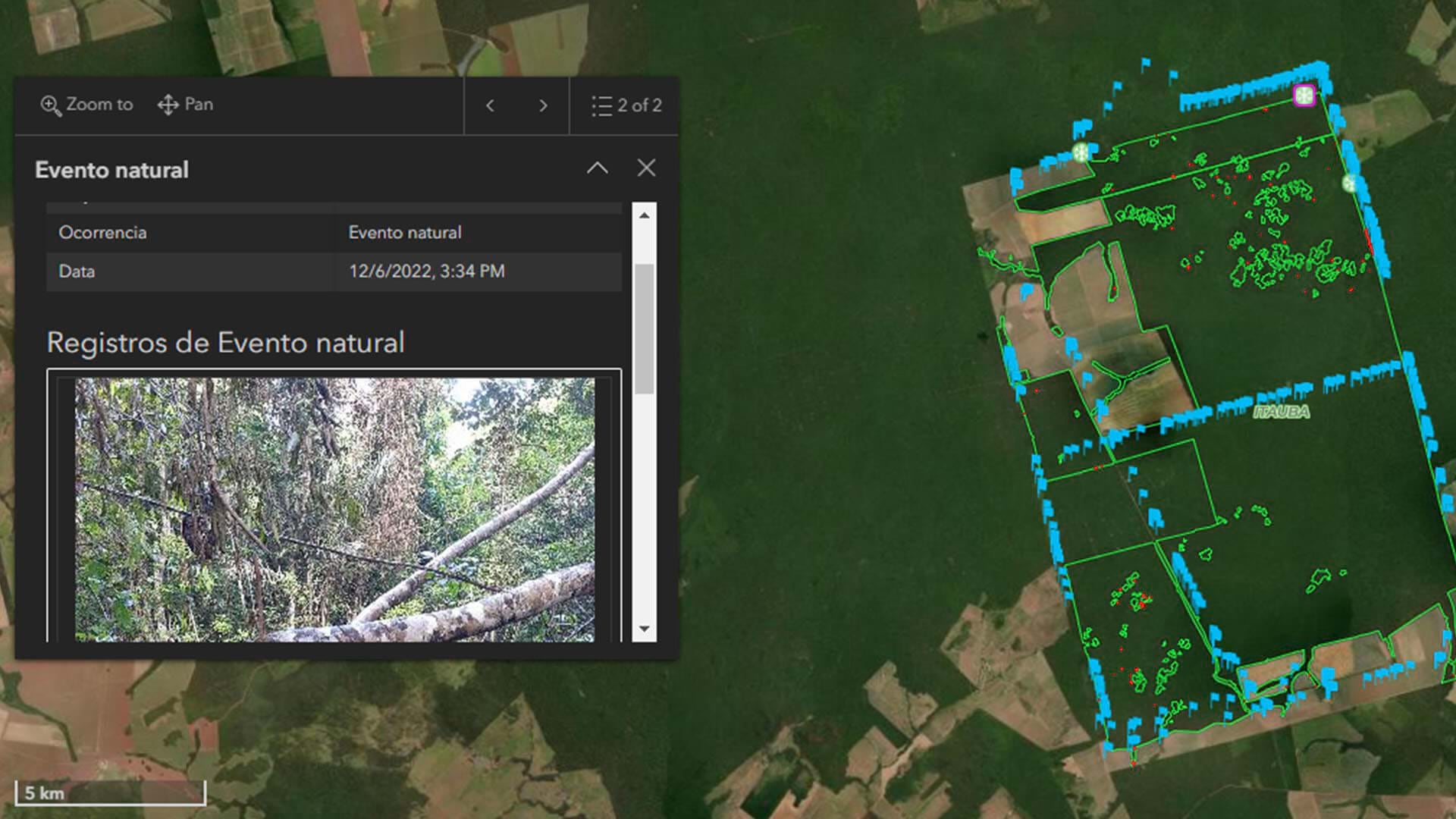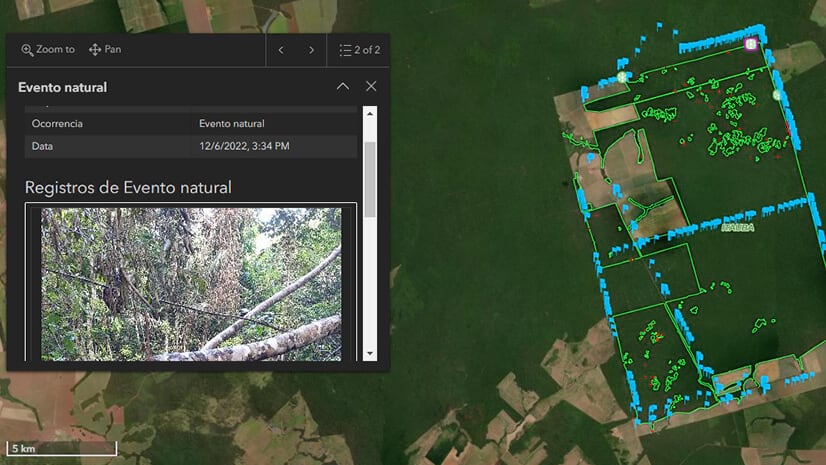At the US Department of Energy’s National Renewable Energy Laboratory (NREL), the nation’s foremost institute for researching advanced energy solutions, experiments don’t just occur in labs and test facilities.
Thanks to NREL’s Intelligent Campus program, the lab’s facilities are test beds where cutting-edge renewable energy technologies, systems integration, and energy efficiency strategies are studied at scale. The techniques they have pioneered hold important lessons for business leaders exploring carbon-reduction projects on their own campuses.
Following an executive order to decarbonize federal buildings by 2045, NREL’s four campuses are implementing carbon-pollution-free strategies that reduce demand from the grid by enabling fast, secure, and interactive distributed energy resources like on-site solar installations, battery storage, hydrogen fuel cells, electrified heating systems, and electric vehicle (EV) charger infrastructure.
To measure the impacts of these integrated solutions, Intelligent Campus program manager Michelle Slovensky and her team built a digital twin platform called PRISM that monitors and analyzes energy use throughout NREL’s facilities and infrastructure systems. Within PRISM, a geographic information system (GIS) captures data in dashboards and maps, highlighting energy production and consumption trends across campuses.
The result: a living blueprint for planning and building a net-zero campus that contains lessons for private enterprises pursuing the same goal.
NREL Models Net-Zero Strategies for the Private Sector
PRISM is an open-standard, modular system of insight that relies on an energy management information system for data on utility bills, real-time weather, interval meters, EV chargers, real-time greenhouse gas emissions, and other energy metrics. The robust platform integrates dynamic data, predictive analytics, and simulations to understand, respond to, and plan real-time energy and resource use. NREL’s four campuses—three in Colorado and one in Alaska—are all represented in the program.
PRISM supports NREL with one of its other major objectives: establishing best practices for private-sector leaders pursuing pathways to net-zero campuses. As climate-focused regulations prompt companies to cut emissions, buildings—which produce around 40 percent of global greenhouse gas emissions—have become a major target of corporate sustainability initiatives.
A key innovation associated with PRISM is its ability to de-risk pilot projects by allowing simulations prior to implementation. The platform will also support annual investments and long-term strategic planning initiatives for campus expansion.
According to a recent survey, 62 percent of business leaders plan to invest in tools and solutions to transition facilities and infrastructure management to clean energy resources. Major tech firms, banks, and universities including Google, J.P. Morgan Chase, and the Massachusetts Institute for Technology (MIT) are touting recent measures that bring campus and facility emissions closer to net-zero goals.
Slovensky emphasizes the parallel between organizational and business culture and the activities undertaken by the labs. “Every step of the way, corporate culture mirrors what the labs are accomplishing. While I receive directives from the White House, they answer to their shareholders.
Of particular interest to C-suite leaders is PRISM’s ability to serve as a strategic planning tool that can simulate carbon-reduction scenarios. Using past data to project future results, PRISM’s GIS-based digital twin models the energy savings, costs, and timelines associated with energy efficiency strategies.
An operational basemap showing the location of assets and key data points illustrates how each investment scenario would alter the physical face of campus. The NREL has used PRISM to model the installation of solar arrays on the Golden, Colorado, campus and plan for an autonomous energy district.
“Ultimately it becomes the communication tool for decision-making on any aspect, whether it’s planning in the future or it’s monitoring performance day-to-day on how I want to operate an asset,” Slovensky explains. “It reveals your vulnerabilities. It illuminates your opportunities.”

To better share lessons and tactical approaches, the institute has developed a consortium with universities in Colorado focused on decarbonizing campuses.
An Evolving Picture of the Energy Transition
The forerunner to the NREL, known as the Solar Energy Research Institute, was founded in 1977 to help the US achieve energy independence following an oil embargo that impaired the nation’s roadways. The energy crisis that NREL is tasked with confronting today—climate change—the clean energy transition demands the latest technological innovations and a bias for action.
On NREL’s Colorado campuses in Golden and Flatirons, 250 electrical meters, 123 EV charging stations, and 28,000 other data points feed into PRISM. GIS, a powerful geospatial platform, pulls all the data and information together into a centralized picture of energy usage.

The collection of location-specific data enables NREL to comply with audits and reporting regulations—a growing priority for companies facing new climate-risk disclosures.
Measuring the energy savings achieved through different conservation measures can also lead to cost savings. For instance, with a real-time feed of campus electricity demand, NREL schedules EV charging during times of lower energy demand, reducing costs.
Operational basemaps have played a similar role at other companies, where the ability to correlate human movement patterns, energy use data, and spatial information helps leaders redesign workplaces to use resources more efficiently.
This systems-level view of multiple buildings, captured via a GIS dashboard, allows executives to view the past, present, and future of a campus amid a clean energy transition.
“Most commercial entities or other organizations, they may create . . . a static paper masterplan,” Slovensky says. “We can’t do that anymore. It has to be dynamic. It has to be evolving.”
Technology Custom Built for Decision-Makers
Slovensky’s conversations with CEOs and CSOs have deeply informed PRISM’s role as a tool for decarbonizing a campus.
It’s an approach built with top managers in mind, helping them visualize the connected choices involved in net-zero strategies. An executive focused on fleet electrification, for instance, will see how capital costs and emissions reductions might change based on a faster or more gradual timeline for electrification. The technology also scores solution readiness—for battery storage, EVs, renewable energy—based on degree of innovation, shovel-readiness, organizational priority, emissions, cost-savings, and land-use implications.
Because organizations often pursue several renewable energy or energy efficiency strategies at once, PRISM models the impacts of bundling initiatives—how combining fleet electrification with renewable energy sources will influence overall budget and time to completion. A GIS-powered map reflecting these outcomes helps decision-makers envision changes in the context of the campus’s physical layout.
“We use the spatial data to solidify how and where it would happen,” Slovensky says.
The ability to toggle options on and off helped Slovensky answer questions and react in real time when she presented a net-zero roadmap to NREL leadership. “Instead of death by PowerPoint and isolated bullet points, you’re actually connecting what the analytical data is to the visualization on the screen,” she says.
In the past, static planning models and a lack of ready information could stall progress on realizing sustainable operations. PRISM’s real-time configurability and access to a decade of data helps sustainability managers and executives reach decisions more quickly and put decarbonization plans into action.
Dynamic, Data-Driven Sustainability Planning
Facilities and campuses are always in flux—even if infrastructure change happens in slow motion, over the course of decades. Old buildings are torn down, neighboring properties are acquired and integrated, new structures are framed and built.
Incorporating net-zero ambitions into long-term infrastructure planning requires a tool like NREL’s PRISM that’s dynamic enough to envision multiple futures. That in turn requires technology like GIS to turn data from batteries, chargers, electrical systems, and solar panels into insights that guide the clean energy transition.
The Esri Brief
Trending insights from WhereNext and other leading publicationsTrending articles

December 5, 2024 |

July 25, 2023 |

November 12, 2018 |

February 1, 2022 |

July 29, 2025 |

July 14, 2025 |





